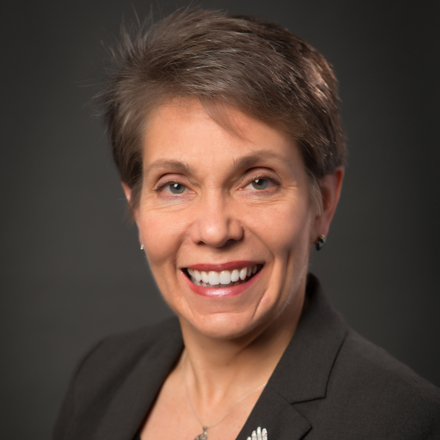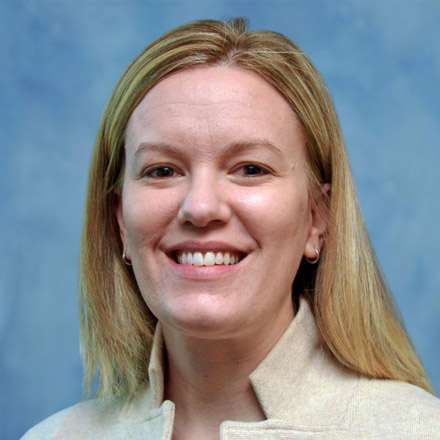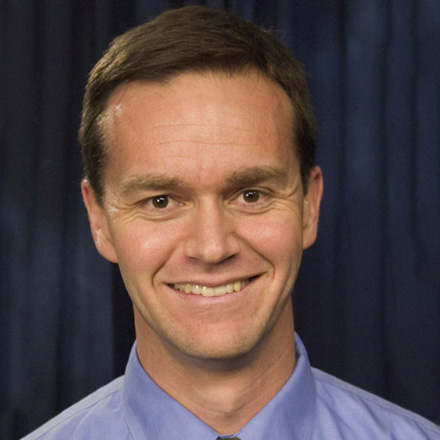ERAS Changes Aim for a ‘Good Fit’ for Students, Programs
AAMC Updates Allow Applicants to Share More Info With Programs
Feb. 2, 2023, David Mitchell — On Feb. 1, the Association of American Medical Colleges announced the most significant changes to its Electronic Residency Application Service in decades. The updates, which include allowing applicants to send program signals to a limited number of residency programs at the point of application, will affect all applicants, residencies and advisers, starting with the 2023-24 application cycle.

Karen Mitchell, M.D., the AAFP’s Vice President of Medical Education, and Steven Brown, M.D., program director of the University of Arizona College of Medicine - Phoenix Family Medicine Residency, represented the AAFP and the Association of Family Medicine Residency Directors, respectively, as family medicine academic organizations worked together during the past year to consider using program signals. Annie Rutter, M.D., M.S., associate professor, academic vice chair and director of medical student education in Albany Medical College’s Department of Family and Community Medicine and a member of the Society of Teachers of Family Medicine Board of Directors, presented a session about the changes during the recent STFM Conference on Medical Student Education.
AAFP News talked with all three family physicians to discuss what the changes mean for family medicine.
AAFP News: What are the most important things to know about the changes?

[Photo: AAFP Vice President of Medical Education Karen Mitchell, M.D.]
Mitchell: At its most basic, the family medicine residency application process is changing to include program signals, allowing applicants to signal to a residency that the program is one of their top five choices in family medicine. That’s the biggest news.
The application service, ERAS, is also incorporating other components that formerly were part of a supplemental application process into the regular process. They are
- additional experience questions that the applicant can choose to add so that programs can get to know them better; and
- geographic preferences, (an option) applicants can (use to) indicate what large geographic area of the United States they are interested in.
Rutter: ERAS is changing for everybody. The last time ERAS was overhauled was in 1996, so it seems reasonable that the Association of American Medical Colleges would attempt revising it, and family medicine is just one of the specialties that’s going to be impacted by changes to the application.
AAFP News: What was the impetus for the changes?
Mitchell: Students have been applying to more programs, and programs have been receiving more applications. That means it’s harder for applicants who may be highly qualified to be seen by programs. And it’s harder for programs to find those applicants who would be really good fits for their program.
Signals allow programs to know who is most serious about their program and allows the program to do more in-depth application reviews for those particular applicants and make good choices about who to invite for interviews.
Brown: The application, interview and match process should be, first and foremost, about finding the right applicant a home in the right program. The programs love to find students that are a great fit for their program mission and community. Programs work hard to do the detailed work of a holistic application review, including a student’s background, experience and values, not just their scores on standardized testing. Program signals allow the programs to know which students have identified their program as a great fit.
AAFP News: Are there more changes to come?
Mitchell: The part we don’t know, which we are still having some family medicine organization-wide discussions about, is whether applicants should be signaling programs at their home medical schools or where students have already done rotations. We will be having further discussion to see if there is agreement. It’s possible, because we have more than 740 programs and they are all quite different, that we will not have broad agreement. What we would encourage programs to do is be clear on their websites about whether or not applicants should be submitting signals to those programs at their home institutions or where they’ve done rotations.

[Photo: Annie Rutter, M.D., M.S., associate professor, academic vice chair and director of medical student education in Albany Medical College’s Department of Family and Community Medicine]
Rutter: This is going to be extremely important for institutions that have multiple residencies — big schools that have multiple sites with different match numbers. It’s also going to be important in places where there are lots of other specialty residencies. Think about med schools that have internal medicine, family medicine, neurology; it’s likely those institutions are going to need to be on the same page across specialties about what they’re expecting their students to do. I don’t know that we’ll get 740 family medicine residencies on the same page, but the important thing is that programs should have conversations with their designated institutional officials, and programs should be clear in what’s expected so as to not increase the anxiety of the applicants.
AAFP News: How have the family medicine organizations been involved in making these decisions?
Mitchell: The AAFP, along with AFMRD, led discussions with the broad family medicine community related to the options for changes in the family medicine application interview system. After a series of listening sessions and after reviewing data from AAMC, it was determined that five signals would serve applicants well without overwhelming residency programs. We looked at data that included things like how far down the rank lists do applicants go in order to be matched in family medicine. One of the things we found is that almost all U.S. graduates rank within their top five choices, so five became a relatively easy number to choose.
Rutter: For STFM, we were kept in the loop of the work that Karen and Steve were doing at AAFP and AFMRD. There were presentations to the STFM Board of Directors, which has a broad representation of undergraduate medical education, graduate medical education, departments, all of these different stakeholders in academic family medicine, who reviewed and provided feedback to AAFP and AFMRD.
I think the other thing that’s important to highlight is that family medicine contributed to the idea of the five preference signals, which are related to the time of application and not to the time of ranking. A student uses a program signal at the time they submit their application way back in September, rather than when they do their rank list at the end of the interview season.
But the rest of the ERAS changes are not unique to family medicine: the inclusion of geographic preferences; the inclusion of setting preference, being able to indicate you want to do a rural or urban practice setting. AAMC made those changes. These will serve different specialty choices in different ways. Students applying to family medicine will want to consider how to approach these changes with assistance from their advisers.

[Photo: Steven Brown, M.D., program director of the University of Arizona College of Medicine - Phoenix Family Medicine Residency]
Brown: The AFMRD held listening sessions (on the program signals), and we heard from more than 100 program directors. The input of these program directors from all parts of the U.S. and every type of community was invaluable to the process.
AAFP News: What else do students and advisers need to know, particularly about the reasoning behind the changes? How will this benefit applicants?
Rutter: The important thing for everyone participating to know is that the AAMC isn’t doing this without thought and data. There are several years of publicly available data on their website for you to review as they rolled this out in pieces to other specialties. It is reassuring that this was calculated and tested. Now it’s not many years down the road, and no other specialty has 740 programs like we do, so we don’t know 100%, but we know there was data behind this and it is shaping the changes.
For advisers, the most important thing they can do is be familiar with the changes so they can guide their students. The final version of the ERAS application for 2023-24 season will be available as a PDF on the AAMC website, likely later this spring. Students can review the PDF and application components so they can take a thoughtful approach to the application questions, with advice and guidance from their advisers, so they can put forth the application that best represents them and their medical school experience.
The bigger questions come with how to use program signaling to communicate to a program that you’re very interested in them before you’ve even interviewed. Students will be looking to learn about programs using lots of different sources, so accurate information on program websites regarding their mission, goals and what kind of resident would be a good fit for them will be important.
The other important thing to recognize is that these changes really support students because the application itself is changing to let programs know more about the applicant. What are the things I have done that are most important for me to share? Where is the geography that’s most important to me? What are the elements of a program that are most important to me? What has my medical school journey been like, and how do I portray that to a program? This application gives the students a chance to explain themselves quite a bit. There are going to be opportunities for brief essays where a student can discuss why they picked a specific geographic region or why they chose not to pick a geographic region at all. There will be multiple opportunities to inject the student’s story to bring life to the application and help program directors with true holistic review.
Additionally, there are certain elements of MyERAS that aren’t shared with all programs. Specifically, geographic preferences will only be shared with programs within that geographic preference area or “division.” If a student applies to a program outside that division, that program won’t see anything displayed and therefore won’t be able to tell if the student didn’t (state a) preference (for) their division or skipped the question altogether. Same goes for program signaling.
Programs are not to use signals to screen out applicants. The programs should use the signals to screen in applicants. If we reassure students that’s the way programs are going to use this, that is a win in both directions. Clearly communicating to applicants, and I think advisers can help to ensure this message is clear, a program signal is done at the time of the application, not at the time of the rank list. If you decide later a program you signaled is no longer in your top five and your top program is one you didn’t signal to begin with, that’s OK. That’s part of the interview process, learning where you’re going to be a good fit.
Mitchell: Steve and I had the opportunity to see what has happened in other specialties presented through the Organization of Program Director Associations. That data showed that the advantage for students is that some students who would have been, for example, in the bottom quartile were now seen and chosen in that top quartile for interviews. The signals brought them to programs’ attention. The programs were able to review the applications and choose to interview them. We were quite impressed that this really helped to bring forth some applicants who might not otherwise have had the opportunities for interviews. We believe this is going to be very useful to family medicine applicants.
Brown: I would encourage student advisers to chat with program directors about the process. The more we understand both the program and student perspectives, the better the process will be for everyone.
AAFP News: What else do programs need to know? How will this benefit them?
Brown: Programs will benefit knowing which students are highly considering their programs. In prior years, program directors would look to “soft” signals, like a geographic connection (“My aunt lives in the next town over”), email communication, or a sentence at the end of the personal statement to see if this student was highly considering their program. Now programs will know who is really interested. This is a huge advantage for programs. Our community chose five signals because we wanted them to still have some scarcity; we wanted them to mean something. That sentiment came directly out of our listening sessions. Our interview slots are a scarce resource. Program directors have expressed concern that top students “hoard” too many interviews, which uses up our interview slots and takes away an opportunity for a student that might not be top 10% on paper but is an amazing fit for our program.
It's also important to know that some programs will receive a small number of signals from students and some will receive hundreds. That is the experience of other specialties. Each program may use their signals differently depending on how many they receive. I would like to reemphasize that I hope programs don’t use the absence of a signal to screen out applicants.
AAFP News: Several other specialties are already using signals, but are there concerns about any negative or unintended consequences?
Rutter: The short answer is probably. We have to recognize the fact that family medicine has more programs than any other specialty that’s been studied so far. That could change things. What we do know is that for specialties using program signals, the data demonstrates that signals are not equal across programs. This is not surprising as different programs receive different numbers of applications. What this means, then, is that not all programs will use signals the same way. If a program receives a large number of signals, maybe it doesn’t change things for them. But for those that receive a smaller number, it can highlight those students that really want to be there because the mission, strengths, curricular elements and geographic location align with what they are looking for.
Brown: It may take a while for programs to figure this out. The main negative would be if programs get all this new information, feel overwhelmed, and don’t really use the information as it is intended. I would strongly encourage programs to share with their recruiting committees the data from other specialties. The main unintended consequence would be if programs don’t really understand the signals and use them to exclude students. A little homework will go a long way.
AAFP News: What can students do to keep up with additional guidance on applying to family medicine residencies?
Mitchell: One of the things is the free AAFP resource, Strolling Through the Match. The also AAMC will have information available to students and programs at MyERAS.
Rutter: There is an AAMC webinar about the new application specifically for advisers and there’s also one for specialties and programs. There’s going to be a stream of continual information coming out from the AAMC, so people should stay abreast of those updates.
The other thing I’ll say is, attend the AAFP’s National Conference. That is a no-brainer for students, if they can get there, to meet as many programs as possible face to face to figure out what is important to them so that when they’re doing that application, their signals mean something because they’ve already connected with those programs.
Brown: I totally agree with Dr. Rutter here. Students should go to this conference if they can make it work. It’s high yield to learn about family medicine and meet programs. I’ve been more than 15 times, and it never fails to inspire me. I always build connections there.
Rutter: There is a series of other conferences, including the Family Medicine Education Consortium and Family Medicine Midwest, that have residency fairs for students to really meet and greet with people so they can figure out what their programs are like.
And the AAFP residency program directory is a great starting point for information: Is a program urban or rural? How big are programs? Where are they located? What hospitals do they work in? It covers the basics so you can start building your information about programs.
AAFP News: Dr. Brown, is there anything to add from a program perspective, or are there any resources coming from AFMRD?
Brown: Program directors can stay tuned for information and resources from the AFMRD. They’ll be a talk at the Residency Leadership Summit in March that will include an AAMC staff member. Bring your questions. Our program director community is always here to support each other.